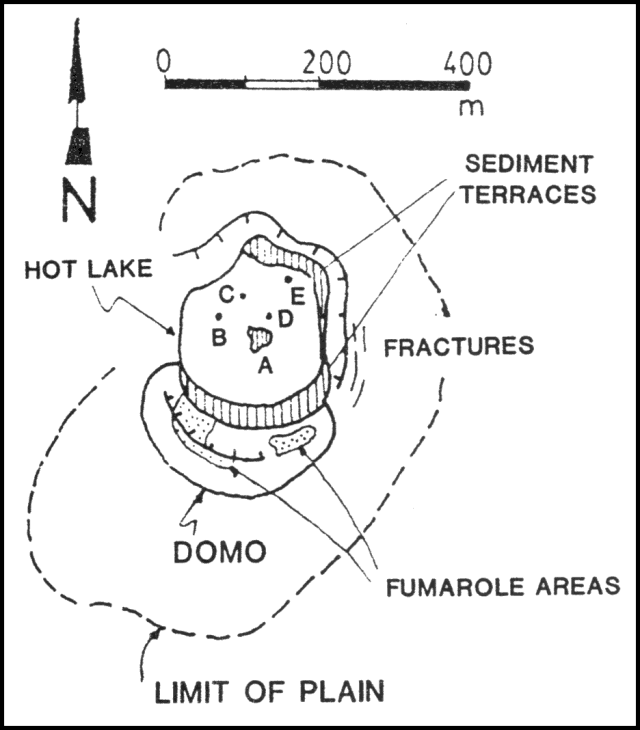Report on Poas (Costa Rica) — June 1988
Scientific Event Alert Network Bulletin, vol. 13, no. 6 (June 1988)
Managing Editor: Lindsay McClelland.
Poas (Costa Rica) Continued minor phreatic activity from crater lake
Please cite this report as:
Global Volcanism Program, 1988. Report on Poas (Costa Rica) (McClelland, L., ed.). Scientific Event Alert Network Bulletin, 13:6. Smithsonian Institution. https://doi.org/10.5479/si.GVP.SEAN198806-345040
Poas
Costa Rica
10.2°N, 84.233°W; summit elev. 2697 m
All times are local (unless otherwise noted)
Strong explosions in April ejected acidic sulfur-rich mud onto the crater rim. Laboratory studies of the sulfurous droplets showed that they were liquid when they fell, and had melting points between 112 and 120°C. According to park guards, there have not been large eruptions like those of April and May for some time.
When geologists visited the volcano on 30 June, geyser-like phreatic activity was continuing, ejecting muddy plumes every 2-3 minutes. Plume heights were predominantly less than 15 m, with maximum observed heights of 80 m. There were frequent sequences of continuous plumes lasting 45 seconds. Most of the plumes were pine-tree shaped but some showed a broad cauliflower form. The strongest explosions originated dispersive seismic signals, without an initial explosive phase.
Since mid-April, three new sites of convective bubbling had formed (C, D, and E on figure 3). From these, bubbles with sediment were intermittently ejected, and on occasion, small mud plumes. The most intense activity was from site E. The level of the hot lake continued to descend, revealing a wide littoral crescent formed by terraces of precipitated sediment. These sediments were thixotropic, making measurements of lake level and temperature difficult. Fractures on the E edge of the lake had openings of up to 25 cm, and facilitated rockfalls into the lake.
Geological Summary. The broad vegetated edifice of Poás, one of the most active volcanoes of Costa Rica, contains three craters along a N-S line. The frequently visited multi-hued summit crater lakes of the basaltic-to-dacitic volcano are easily accessible by vehicle from the nearby capital city of San José. A N-S-trending fissure cutting the complex stratovolcano extends to the lower N flank, where it has produced the Congo stratovolcano and several lake-filled maars. The southernmost of the two summit crater lakes, Botos, last erupted about 7,500 years ago. The more prominent geothermally heated northern lake, Laguna Caliente, is one of the world's most acidic natural lakes, with a pH of near zero. It has been the site of frequent phreatic and phreatomagmatic eruptions since an eruption was reported in 1828. Eruptions often include geyser-like ejections of crater-lake water.
Information Contacts: G. Soto, UCR.


